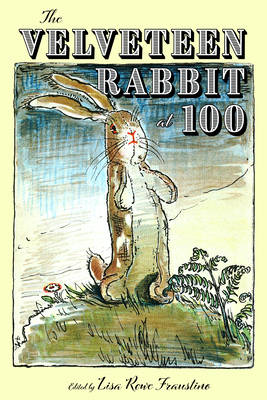
- Afhalen na 1 uur in een winkel met voorraad
- Gratis thuislevering in België vanaf € 30
- Ruim aanbod met 7 miljoen producten
- Afhalen na 1 uur in een winkel met voorraad
- Gratis thuislevering in België vanaf € 30
- Ruim aanbod met 7 miljoen producten
Zoeken
The Velveteen Rabbit at 100
€ 50,95
+ 101 punten
Omschrijving
Contributions by Kelly Blewett, Claudia Camicia, Alisa Clapp-Itnyre, Lisa Rowe Fraustino, Elisabeth Graves, Karlie Herndon, KaaVonia Hinton, Holly Blackford Humes, Melanie Hurley, Kara K. Keeling, Maleeha Malik, Claudia Mills, Elena Paruolo, Scott T. Pollard, Jiwon Rim, Paige Sammartino, Adrianna Zabrzewska, and Wenduo Zhang First published in 1922 to immediate popularity, The Velveteen Rabbit by Margery Williams has never been out of print. The story has been adapted for film, television, and theater across a range of mediums including animation, claymation, live action, musical, and dance. Frequently, the story inspires a sentimental, nostalgic response--as well as a corresponding dismissive response from critics. It is surprising that, despite its longevity and popularity, The Velveteen Rabbit has inspired a relatively thin dossier of serious literary scholarship, a gap that this volume seeks to correct. While each essay can stand alone, the chapters in "The Velveteen Rabbit" at 100 flow in a coherent sequence from beginning to end, showing connections between readings from a wide array of critical approaches. Philosophical and cultural studies lead us to consider the meaning of love and reality in ways both timeless and temporal. The Velveteen Rabbit is an Anthropocene Rabbit. He is also disabled. Here a traditional exegetical reading sits alongside queering the text. Collectively, these essays more than double the amount of serious scholarship on The Velveteen Rabbit. Combining hindsight with evolving sensibilities about representation, the contributors offer thirteen ways of looking at this Rabbit that Margery Williams gave us--ways that we can also use to look at other classic storybooks.
Specificaties
Betrokkenen
- Uitgeverij:
Inhoud
- Aantal bladzijden:
- 252
- Taal:
- Engels
- Reeks:
Eigenschappen
- Productcode (EAN):
- 9781496846006
- Verschijningsdatum:
- 18/05/2023
- Uitvoering:
- Paperback
- Formaat:
- Trade paperback (VS)
- Afmetingen:
- 156 mm x 234 mm
- Gewicht:
- 390 g

Alleen bij Standaard Boekhandel
+ 101 punten op je klantenkaart van Standaard Boekhandel
Beoordelingen
We publiceren alleen reviews die voldoen aan de voorwaarden voor reviews. Bekijk onze voorwaarden voor reviews.










